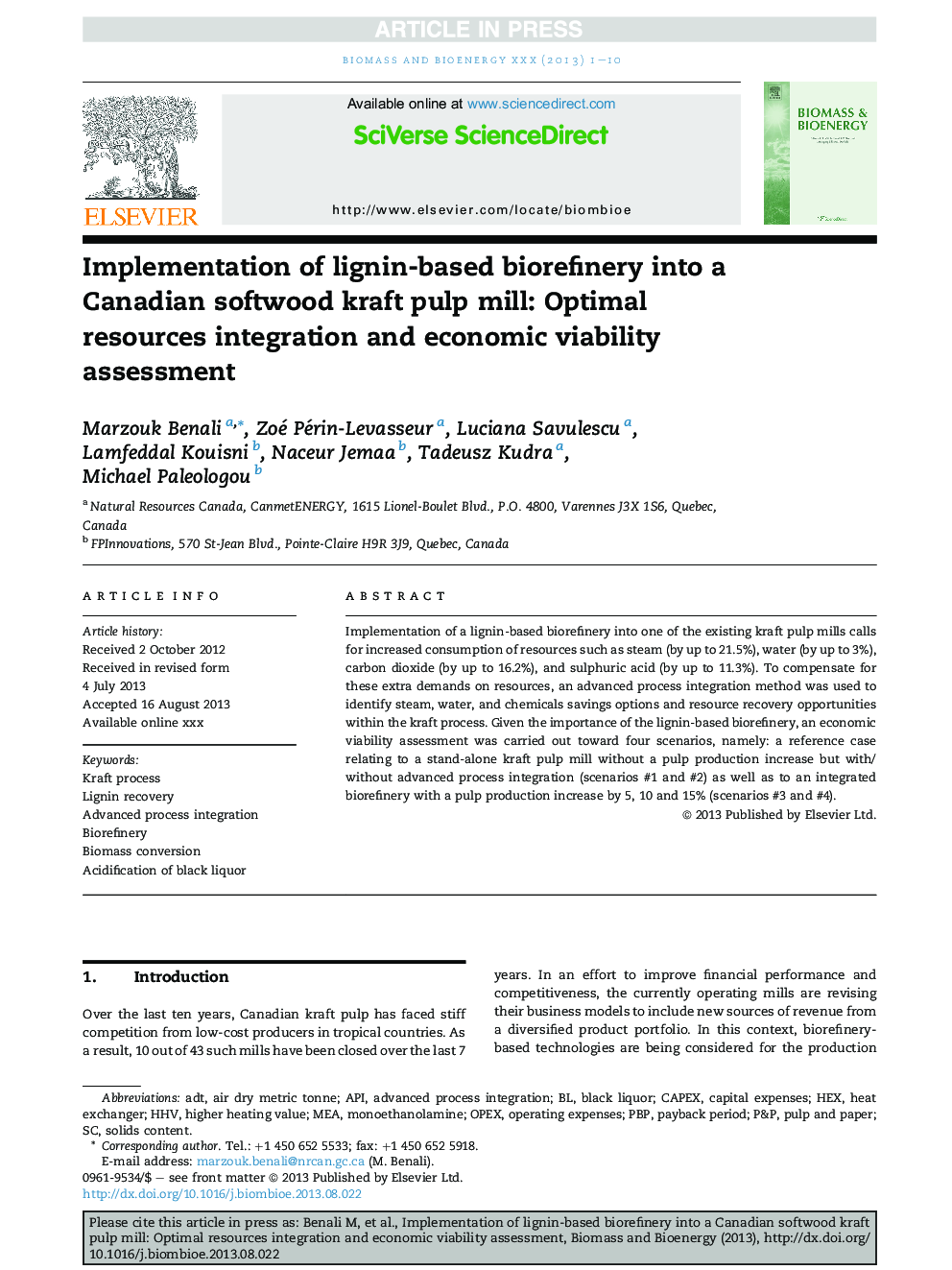| Article ID | Journal | Published Year | Pages | File Type |
|---|---|---|---|---|
| 7064635 | Biomass and Bioenergy | 2014 | 10 Pages |
Abstract
Implementation of a lignin-based biorefinery into one of the existing kraft pulp mills calls for increased consumption of resources such as steam (by up to 21.5%), water (by up to 3%), carbon dioxide (by up to 16.2%), and sulphuric acid (by up to 11.3%). To compensate for these extra demands on resources, an advanced process integration method was used to identify steam, water, and chemicals savings options and resource recovery opportunities within the kraft process. Given the importance of the lignin-based biorefinery, an economic viability assessment was carried out toward four scenarios, namely: a reference case relating to a stand-alone kraft pulp mill without a pulp production increase but with/without advanced process integration (scenarios #1 and #2) as well as to an integrated biorefinery with a pulp production increase by 5, 10 and 15% (scenarios #3 and #4).
Keywords
Related Topics
Physical Sciences and Engineering
Chemical Engineering
Process Chemistry and Technology
Authors
Marzouk Benali, Zoé Périn-Levasseur, Luciana Savulescu, Lamfeddal Kouisni, Naceur Jemaa, Tadeusz Kudra, Michael Paleologou,
